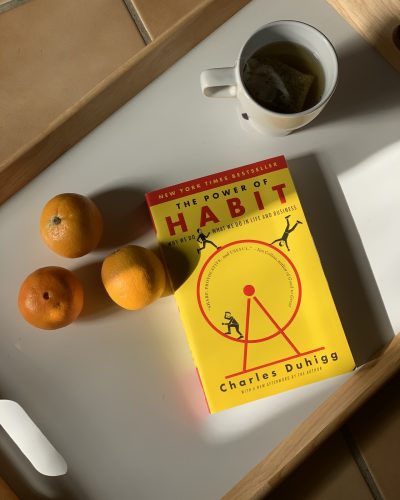My Achilles heal is made of salty chips, sour candy, and memes. If they are available, I’m 95% sure that I will be engaging.
Like 66% of Americans, I sleep next to my phone. I don’t have an alarm clock outside of the bed so my phone serves this capacity. Unfortunately, this also means I spend 30 minutes to an hour scrolling through instagram laughing at memes before bed. Although it’s nice to decompress from the day, it’s not that great for my sleep .
If you struggle setting goals and sticking to them, you may be having a hard time sustaining new habits. If we are going to start and keep any new habit, it helps to learn a little bit about how habits are made in the first place.

Charles Duhigg, author of The Power of Habit, discusses a four step process of habit formation.
Step 1 a cue or trigger
Step 2 a craving or a desire
Step 3 a response or behavior
Step 4 a reward
The craving is often linked to a desire like relieving stress or boredom. The response is the actual behavior a person engages in. The reward is the result.
For example, you are stressed and tired at work (trigger). You want to feel energized (desire) and drink a Red Bull (behavior). The habit becomes drinking Red Bull when you are at work.
"What we know from lab studies is that it's never too late to break a habit. Habits are malleable throughout your entire life.”
Once you recognize how habits are made, it is entirely possible to make new habits for the better. Using the same thought process, I can make a different feedback loop to stop looking at my phone before bed.
My cue is being tired and my desire is to relieve stress. Usually my behavior is scrolling on my phone; but, I am replacing that activity with turning on my lavender diffuser. To make it difficult to access my phone I’m going to have to move my charger further away so I can’t lay down and reach it. This is my self care goal for the month, what’s yours?
We want to hear from you. Are you working on shifting a new habit?
Let us know in the comments.





